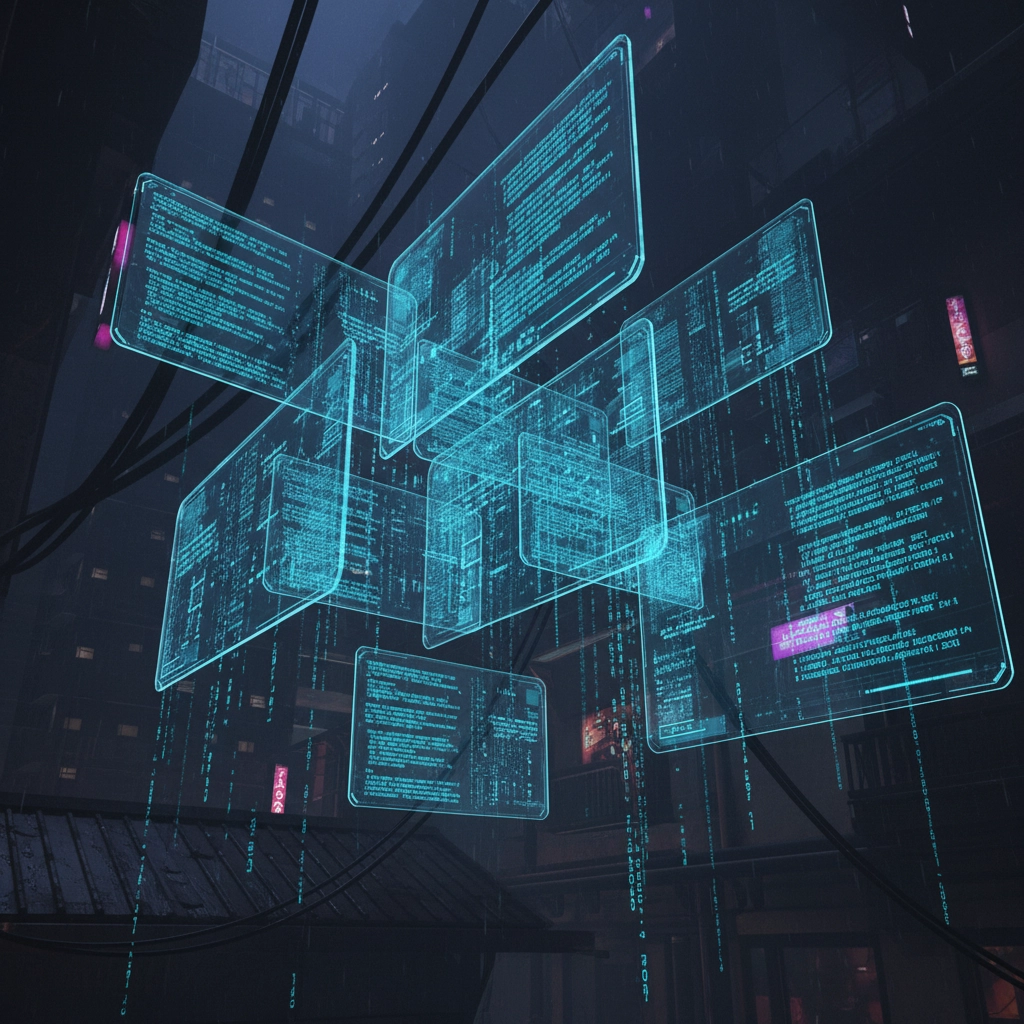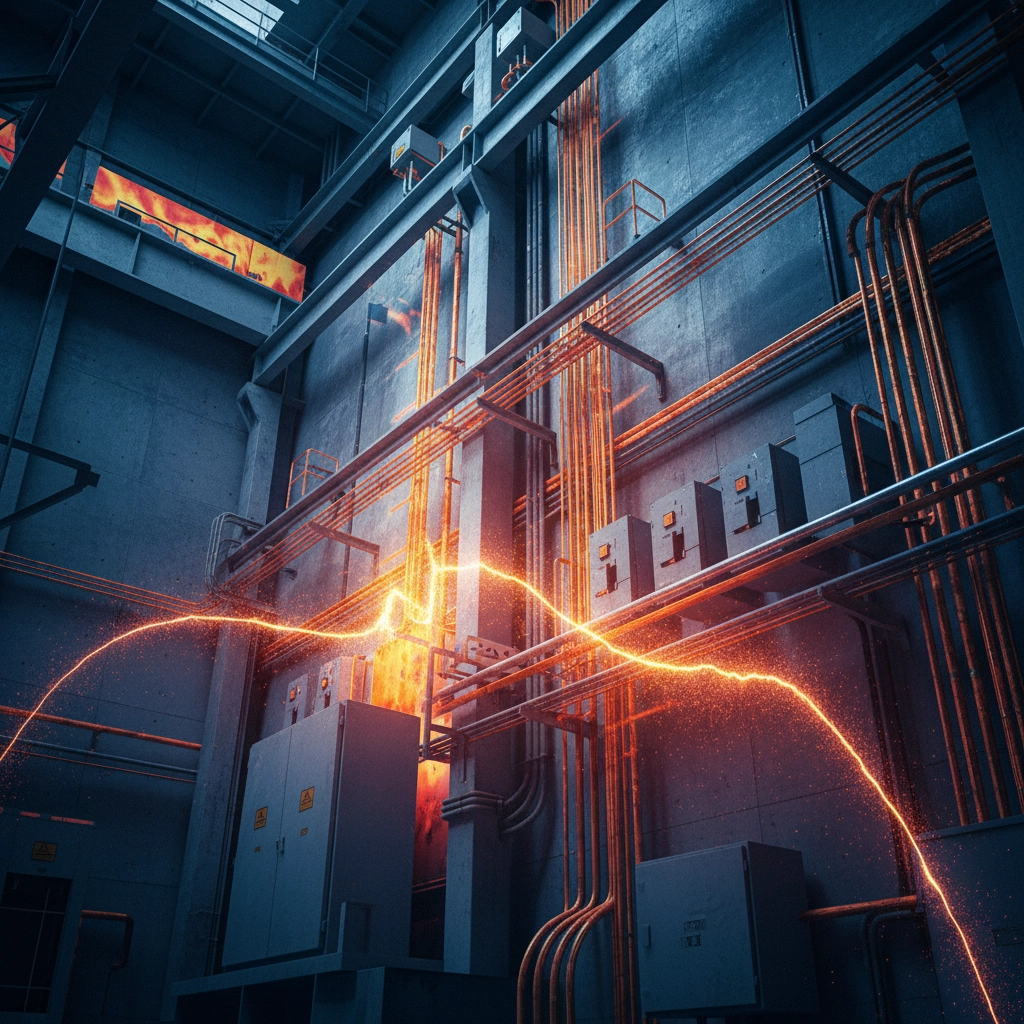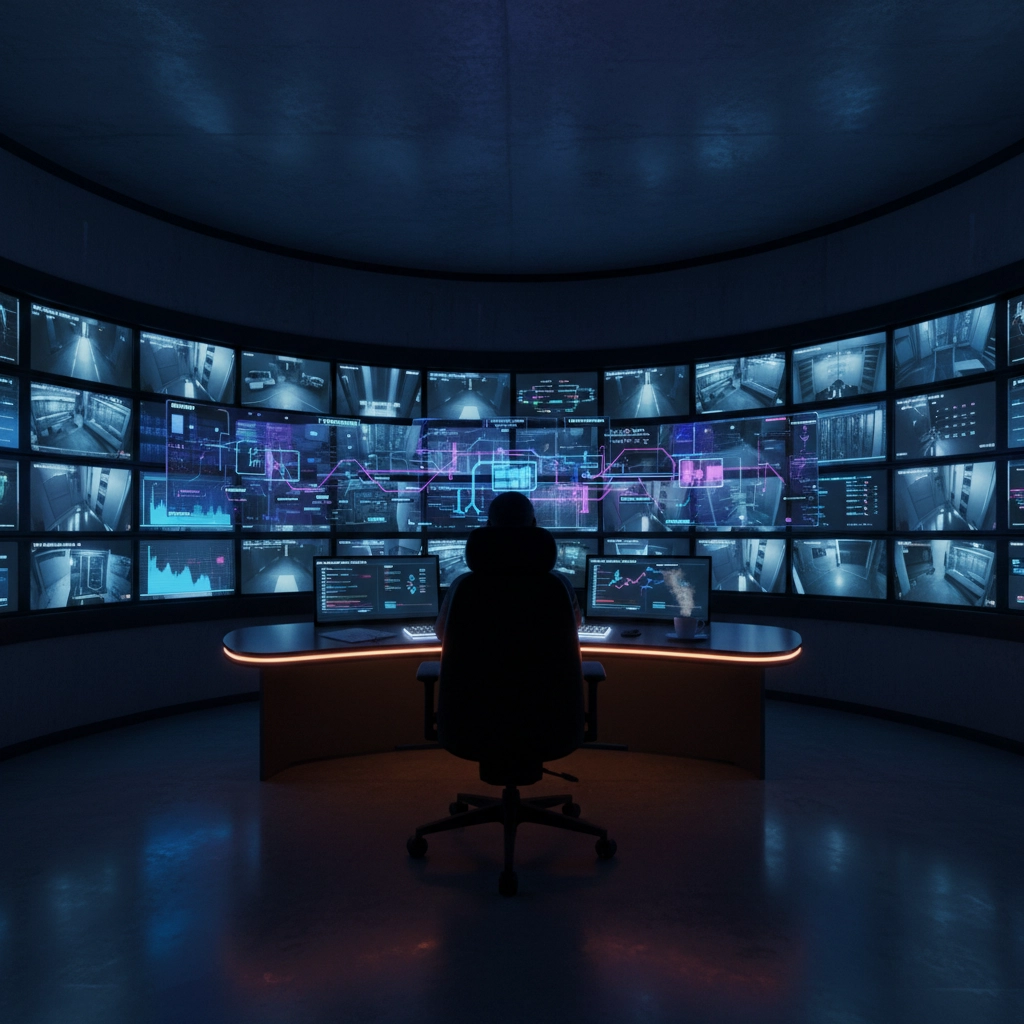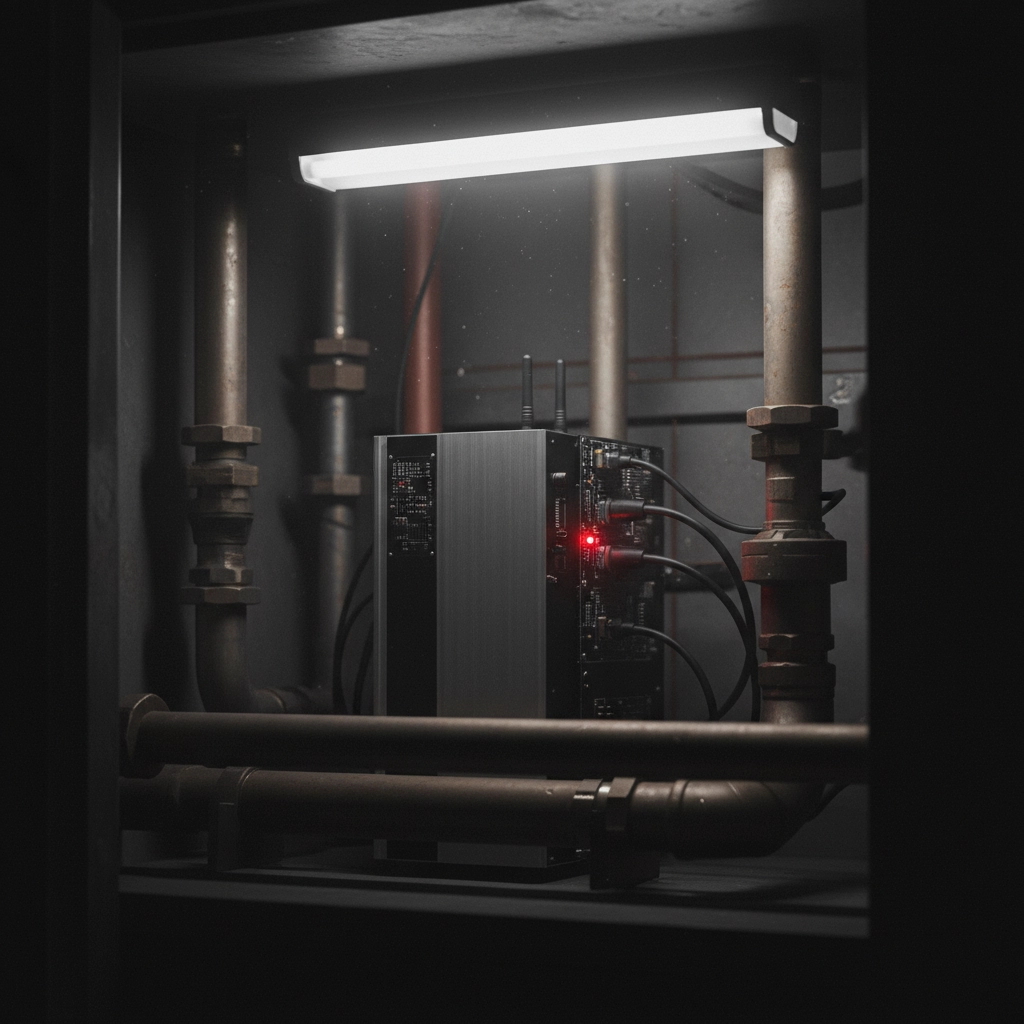The fluorescent hum of the ICS Technology Group monitoring center felt different at 3:47 AM. Kaito stretched his shoulders, rolling them back as the third cup of coffee kicked in. The Bentham Tower incident from two hours ago should have been routine: a simple badge error, camera hiccup, back to business. But something nagged at him.
His fingers moved across the keyboard with practiced precision, pulling up the cloud-based security logs one more time. The beauty of ICS's integrated system wasn't just the real-time monitoring: it was the forensic power lurking underneath. Every swipe, every pixel change, every network pulse got archived and cross-referenced automatically.
"Let's see what you're really hiding," Kaito muttered to the glowing screens.
The badge error at 1:23 AM had seemed straightforward. Marcus Chen, facilities manager, third floor access. But Kaito's years in security had taught him that patterns rarely lied, and Marcus's pattern looked... off.

The Digital Breadcrumbs
Kaito expanded the timeline view, watching the data unfold like a digital detective story. Marcus's badge had indeed triggered the error: but not because of a system glitch. The access control logs showed something more interesting: Marcus had attempted entry three times in rapid succession, each swipe generating increasing system strain.
"That's not frustration," Kaito said aloud. "That's deliberation."
He pulled up the corresponding camera feeds from the Eagle Eye system ICS had installed six months ago. The night vision clarity was stunning: another reason why ICS insisted on cutting-edge hardware rather than bargain-basement alternatives. But here's where it got interesting: Camera 12A, which should have captured Marcus at the third-floor entrance, had experienced a "power fluctuation" at exactly 1:21 AM.
Two minutes before the badge errors started.
Kaito leaned back, processing. In his experience, coincidences in security were about as rare as unicorns. The power fluctuation wasn't random: someone had caused it. But who? And more importantly, why hadn't the backup systems kicked in?
The Root Cause Deep Dive
This was where ICS's methodology separated them from the competition. Most security companies would file a quick report: badge error resolved, camera restored, case closed. But ICS built their reputation on root cause analysis: digging until they found the real story.
Kaito opened the building's network diagnostics panel. The integration between access control, surveillance, and environmental systems was one of ICS's signature approaches. Everything talked to everything else, creating a web of accountability that was nearly impossible to fool.
The power logs told a story. At 1:19 AM, there had been a brief voltage spike in the third-floor electrical grid. Not enough to trigger the main alarms, but sufficient to cause sensitive electronics to hiccup. The spike originated from... the janitorial closet on the third floor.
"Interesting neighborhood you picked, Marcus," Kaito murmured.

He cross-referenced the building's personnel database with the cleaning schedule. Jorge Ramirez, night custodian, had been scheduled to service the third floor between 1:00 and 2:00 AM. But Jorge's own access logs showed him on the seventh floor during that entire window.
The pieces clicked together. Someone had accessed the janitorial closet using an unauthorized method, triggered the power spike that disabled Camera 12A, then used those two minutes of blindness to attempt whatever Marcus was really trying to do at the third-floor entrance.
Technology Reveals Truth
Kaito's phone buzzed with a text from Dave, the overnight security supervisor at Bentham Tower: "Everything quiet here. Marcus finished his rounds around 2 AM. All good."
But Kaito knew better. He pulled up the thermal imaging overlay from the HVAC monitoring system: another layer in ICS's comprehensive approach. The third floor had shown elevated heat signatures in two locations during the incident window: the entrance where Marcus was badging, and the janitorial closet.
Two people. Working together.
"Dave," Kaito called. "I need you to do something for me. Check the janitorial closet on three. Look for anything that doesn't belong: tools, electronics, anything."
"At 4 AM? Kaito, what's going on?"
"Just humor me. And Dave? Use your body cam."
While he waited, Kaito dug deeper into Marcus's background. Facilities managers had broad access by necessity, but Marcus's recent badge activity showed a pattern of late-night visits to areas outside his normal responsibilities. IT server rooms, executive floors, secure storage areas.
The pieces of a larger puzzle were emerging.

The Human Element
Dave's voice crackled through the radio fifteen minutes later. "Kaito, you're gonna want to see this."
The body cam footage streamed directly to Kaito's workstation: another advantage of ICS's cloud-integrated approach. Inside the janitorial closet, wedged behind the industrial vacuum cleaner, sat a small device about the size of a smartphone.
"Don't touch it," Kaito instructed. "I'm calling this in."
The device was a signal jammer: powerful enough to disrupt camera feeds and access control systems within a thirty-foot radius. Professional grade, expensive, and definitely not standard janitorial equipment.
But here's what made Kaito smile: whoever placed it there didn't understand ICS's system architecture. The jammer could disrupt local camera feeds, but it couldn't touch the cloud-based backup streams or the distributed sensor network. Every step of their plan had been recorded by redundant systems they didn't even know existed.
The ICS Advantage
As dawn approached and the authorities arrived to investigate what turned out to be a sophisticated corporate espionage attempt, Kaito reflected on why ICS Technology Group's approach worked so well. It wasn't just about having the best cameras or the strongest access control: it was about creating an interconnected ecosystem where truth had nowhere to hide.
The would-be thieves had planned for traditional security. They'd prepared for isolated camera systems, standalone access control, and basic monitoring. They hadn't planned for a security infrastructure that thought like a detective, where every system communicated with every other system, creating a digital web of accountability.

Marcus and his accomplice: Jorge's replacement for the night, as it turned out: had targeted Bentham Tower's executive files, planning to use the janitorial closet as a staging area while Marcus's facilities access got them into the secure areas. They'd probably done this before at buildings with conventional security setups.
But not here. Not with ICS watching.
Beyond the Night Shift
By 6 AM, as Kaito prepared his incident report, he felt the familiar satisfaction that came with a puzzle solved. But more than that, he felt proud of the technology that made it possible. ICS didn't just install security systems: they created security ecosystems that anticipated the unexpected.
The Bentham Tower incident would become a case study in proactive security. The building owners would get a complete forensic analysis, recommendations for additional safeguards, and the peace of mind that comes from knowing their security partner thinks three steps ahead.
This was the difference between security companies that react and security companies that anticipate. ICS Technology Group didn't just respond to incidents: they prevented them from becoming disasters.

Your Security Story
Every building has its own story, its own vulnerabilities, its own unique challenges. The question isn't whether something will test your security: it's whether your security will be ready when it does.
Kaito's story at Bentham Tower demonstrates what's possible when cutting-edge technology meets thoughtful implementation and proactive monitoring. But it also raises an important question: What story would your security tell?
If you're curious about how ICS Technology Group's integrated approach could transform your building's security posture, discover our comprehensive security assessment services. Because in security, the best story is the one where nothing goes wrong: and we make sure it stays that way.
Next time in Kaito: Chapter Three – The morning debrief reveals connections that stretch far beyond Bentham Tower, and Kaito discovers that some security challenges require more than technology to solve.


